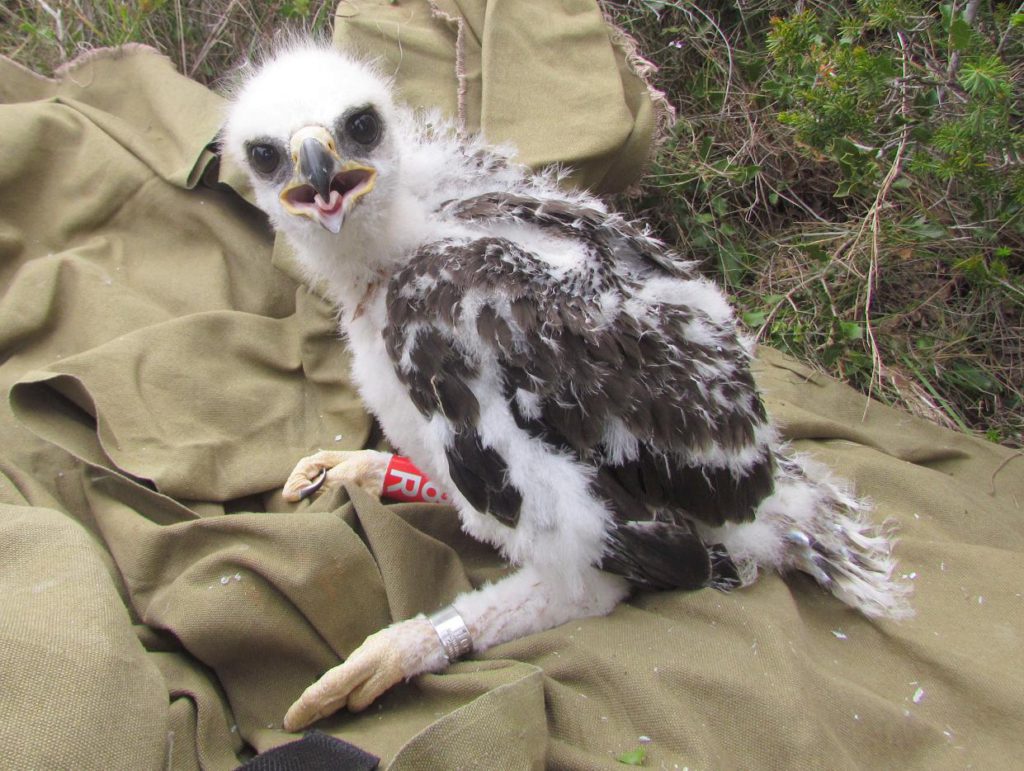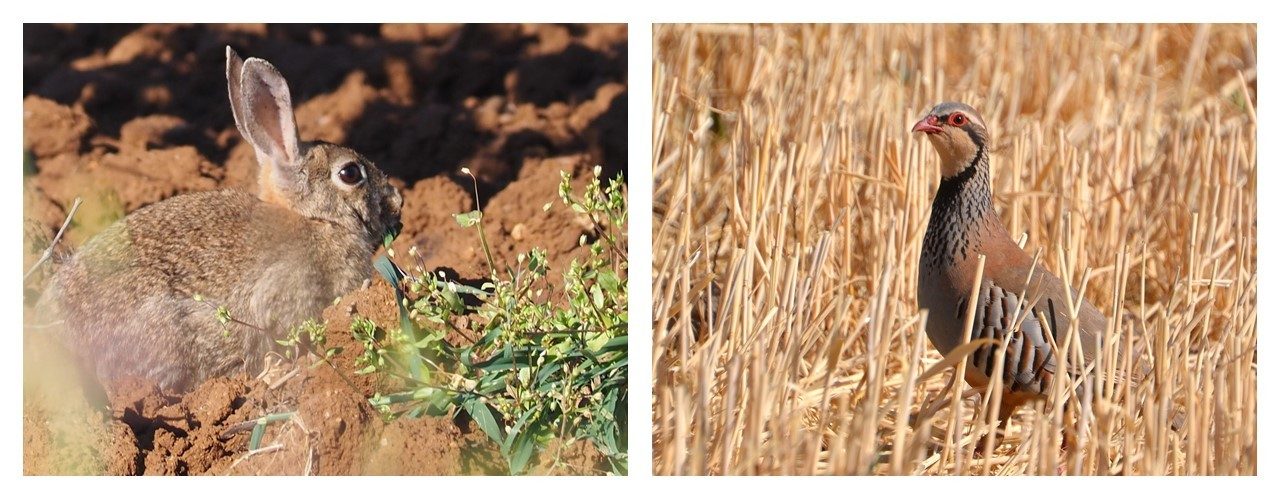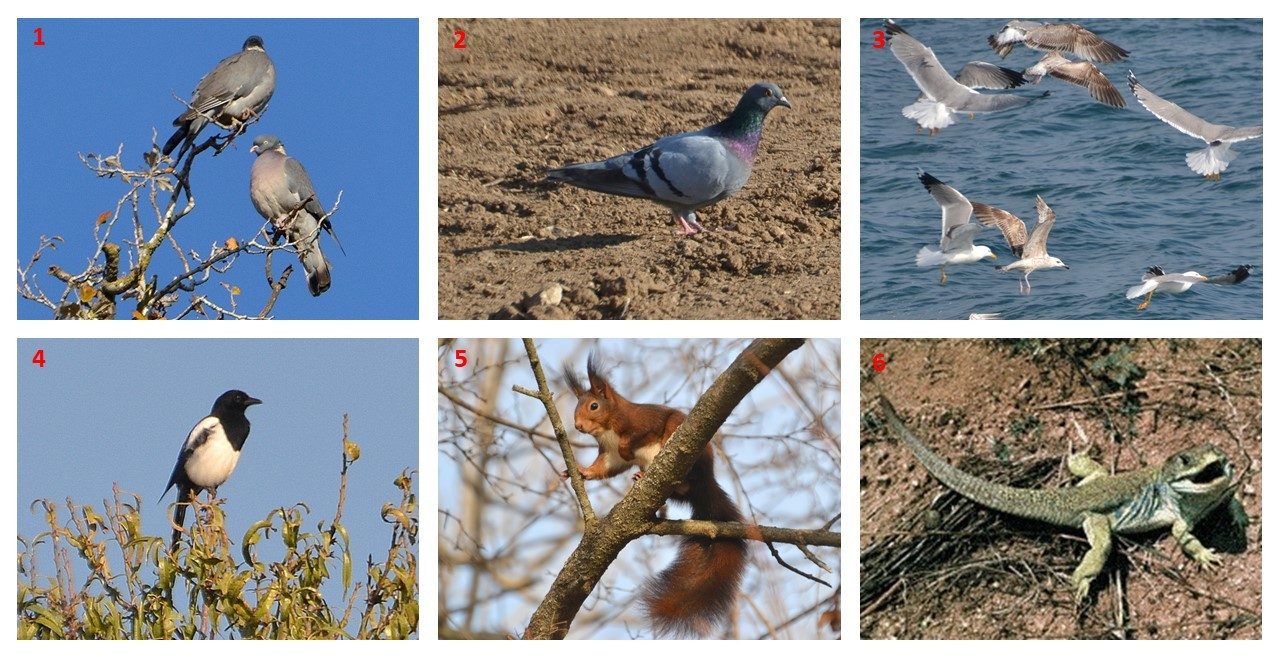Bonelli’s eagle
Despite the large number of work on diet in populations of Bonelli’s eagle in Western Europe, the relationship between the availability of prey, its consumption and vital parameters was still poorly known. For this reason, to analyse the effect of prey availability we gathered information on the diet of the Bonelli’s Eagle in various regions of Europe over the period 1968-2006 and we analysed their changes observed in the wake of rabbit haemorrhagic disease (RHD), which was first recorded in 1988. According to the study, the most common prey of the Bonelli’s Eagle before the outbreak of RHD was the rabbit, followed by pigeons and partridges. However, although in southern areas rabbits and partridges were the most frequently captured prey, in northern areas a wider range of prey species including pigeons and other birds was consumed, probably due to the lower abundance of rabbits and partridges. When RHD reached Europe in 1988, it extended across the Iberian Peninsula and the total rabbit population decreased by approximately 30%. This obliged eagles to diversify their prey items and hunt for other mammals, pigeons, corvids and other birds. However, the reduction of rabbits in the diet did not seem to be proportional to that experienced by the rabbit population in the wild, thereby suggesting that rabbits are key preys for the survival of Bonelli’s eagle populations.
On the other hand, to investigate the diet of Bonelli’s Eagle nestlings and to determine whether Stable Isotope Analyses (SIA) allowed accurate representation of their dietary patterns, we studied the diet of several Bonelli’s Eagles territories in Catalonia during 2008-2011 through a conventional pellet analysis and SIA of nestlings’ feathers. In order to reconstruct eagles’ diet by analysing the isotopic composition of their feathers, first we had to characterise the isotopic composition (C, N and S) of Bonelli’s Eagle main preys in Catalonia. The study showed that the isotopic analysis of feathers allows inferring individual species’ diet during the breeding period, something that is not possible by using pellet. Isotopic analyses also allowed us to analyse the effects of food intake and composition on individual body condition of Bonelli’s eagle nestlings and territorial vital rates during 2010 and 2011. A greater consumption of a preferred preys, such as rabbits and red-legged partridges, improved nestling body condition and increased territorial productivity.
This is a relevant information for the conservation of the species, since it suggests that territories with lower vital rates (mainly productivity), would require conservation actions aiming at increasing prey availability to improve territorial productivity.
These studies have received the support from Departamento de Educación del Gobierno de Navarra, the Ministerio de Ciencia e Innovación and the Ministerio de Economia y Competitividad, as well as the collaboration of many other organisms and institutions.
Related publications
A43.- RESANO-MAYOR, J., HERNÁNDEZ-MATÍAS, A., REAL, J., PARÉS, F., MOLEÓN, M., MATEO, R., ORTIZ-SANTALIESTRA, M.E. 2016. The influence of diet on nestling body condition of an apex predator: a multi-biomarker approach. Journal of Comparative Physiology B, 186 (3): 343–362. https://doi.org/10.1007/s00360-016-0967-3 pdf
A41.- RESANO-MAYOR, J., REAL, J., MOLEÓN, M., SÁNCHEZ-ZAPATA, J. A., PALMA, L. & HERNÁNDEZ-MATÍAS, A. 2015. Diet-demography relationships in a long-lived predator: from territories to populations. Oikos. doi: 10.1111/oik.02468 pdf
A40.- ORTIZ-SANTALIESTRA, M.E., RESANO-MAYOR, J., HERNÁNDEZ-MATÍAS, A., RODRÍGUEZ-ESTIVAL, J., CAMARERO, P.R., MOLEÓN, M., REAL, J. & MATEO, R. 2015. Pollutant accumulation patterns in nestlings of an avian top predator: biochemical and metabolic effects. Science of The Total Environment, 538: 692-702. http://dx.doi.org/10.1016/j.scitotenv.2015.08.053 pdf
A37.- RESANO-MAYOR, J., HERNÁNDEZ-MATÍAS, A., REAL, J., MOLEÓN, M., PARÉS, F., INGER, R. & BEARHOP, S. 2014. Multi-Scale Effects of Nestling Diet on Breeding Performance in a Terrestrial Top Predator Inferred from Stable Isotope Analysis. PLoS ONE9(4): e95320. https://doi.org/10.1371/journal.pone.0095320 pdf
A35.- RESANO-MAYOR, J., HERNÁNDEZ-MATÍAS, A., REAL, J., PARÉS, F., INGER, R. & BEARHOP, S. 2013. Comparing pellet and stable isotope analyses of nestling Bonelli’s Eagle Aquila fasciata diet. Ibis. doi: 10.1111/ibi.12095 pdf
A33.- MOLEÓN, M., SEBASTIÁN-GONZÁLEZ, E., SÁNCHEZ-ZAPATA, J. A., REAL, J., PIRES, M. M., GIL-SÁNCHEZ, J. M., BAUTISTA, J., PALMA, L., BAYLE, P., GUIMARÃES, P. R. & BEJA, P. 2012. Changes in intrapopulation resource use patterns of an endangered raptor in response to a disease-mediated crash in prey abundance. Journal of Animal Ecology, 81: 1154–1160. doi: 10.1111/j.1365-2656.2012.02006.x pdf
A32.- RESANO, J., BAYLE, P., REAL, J., HERNÁNDEZ, A., VINCENT-MARTIN, N. & RAVAYROL, A. 2012. Analyse du régime alimentaire de l’Aigle de Bonelli Hieraaetus fasciatus (Vieillot, 1822) pendant la saison de reproduction 2010 en France. Nature Provence, 1: 95–101. pdf
A31.- RESANO, J., HERNÁNDEZ-MATÍAS, A., REAL, J. & PARÉS, F. 2011. Using stable isotopes to determine dietary patterns in Bonelli’s Eagle (Aquila fasciata) nestlings. Journal of Raptor Research, 45 (4): 342-352. http://dx.doi.org/10.3356/JRR-11-13.1. pdf
A23.- MOLEÓN, M., SÁNCHEZ-ZAPATA, J.A., REAL, J., GARCÍA-CHARTON; J.A., GIL-SÁNCHEZ, J.M., PALMA,L., BAUTISTA, J. & BAYLE, P. 2009. Large scale spatio-temporal shifts in the diet of a predator mediated by an emerging infectious disease of its main prey. Journal of Biogeography, 36 (8): 1502–1515. doi: 10.1111/j.1365-2699.2009.02078.x pdf
A21.- MONLEÓN, M., GIL, J.L., REAL, J., SÁNCHEZ-ZAPATA, J.A., BAUTISTA, J., SÁNCHEZ-CLEMONT, J.F. 2007. Non-breeding feeding ecology of Bonelli’s eagle Hieraaetus fasciatus in the Iberian Peninsula. Ardeola, 54 (1): 135-143. pdf
A10.- REAL, J. 1996. Biases in diet study methods in the Bonelli’s eagle. The Journal of Wildlife Management, 60: 632-638. pdf
D5.- RESANO MAYOR, J. 2014. Estudio de la ecología trófica del águila perdicera Aquila fasciata: efectos de la dieta sobre la condición corporal, las tasas vitales y la demografia. Tesi doctoral. Universitat de Barcelona.
D2.- REAL, J. 1991. L’àliga perdiguera Hieraaetus fasciatus a Catalunya: status, ecologia tròfica, biologia reproductora i demografia. Tesi doctoral. Universitat de Barcelona.
E34.- RESANO, J. 2010. L’utilisation des isotopes stables (δ13C, δ15N et δ34S) dans l’étude du régime alimentaire de l’Aigle de Bonelli Aquila fasciata en Catalogne. In: SCHER O. & M. LECACHEUR (Eds.), 2011. La conservation de l’Aigle de Bonelli. Actes du colloque international, 28 et 29 janvier 2010, Montpellier. CEN LR, CEEP, CORA FS & DREAL LR: 58-61. pdf



